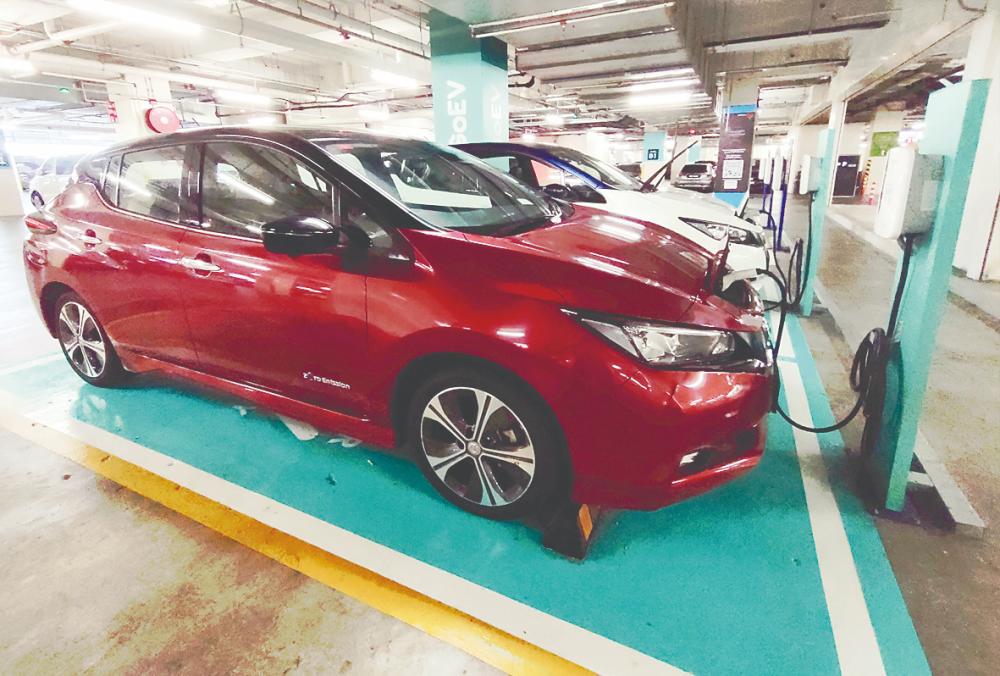ARTIFICIAL intelligence (AI) is gradually taking over our roads, including in Malaysia. While completely driverless cars are still a dream of the future, we
are seeing a transformation across vehicles on the roads today driven by technological advancements, with an increasing focus on sustainability and changing consumer preferences.
But how will the rise of autonomous vehicles (AVs) and connected car technologies change the automotive industry? As new risks emerge, how can we ensure everyone is protected?
Approach to autonomous driving
The automotive industry is a key contributor to Malaysia’s economy, contributing around RM40 billion or 4% of the country’s gross domestic product.
In addition to the industry being the third largest in Southeast Asia, Malaysia is also preparing for the future of mobility through infrastructure and research and development (R&D) investments.
For example, in November last year, the Malaysian Research Accelerator for Technology and Innovation (Mranti) launched the country’s largest multi-scenario AV experimental laboratory, known as AV XL at Mranti Park.
What is critical though is that in addition to these R&D centres, public infrastructure and insurance must keep up as well to protect all drivers, passengers and pedestrians.
Four shifts that will transform motor insurance
Autonomous driving will significantly change the entire mobility landscape. Not all at once but gradually, just as the evolution of autonomous driving will continue over the next few years.
Allianz Partners’ global experience and expertise as an integral member of the mobility ecosystem offers unique insights into the industry’s evolution. We foresee four key shifts that will transform motor insurance.
Firstly, as AVs introduce new technologies on our roads, this will give rise to new risks. The biggest change is that the responsibility of driving will shift from the driver to technology, such as sensors and software.
While the focus in insurance today is primarily on parameters such as the driver, type of car, repair costs and region; technical innovations are giving rise to new risk factors, such as data-related and cyber risks.
Another example is in shifting liability. Today, a driver who causes an accident while driving cannot file a claim for liability insurance, whereas the people who may have been injured can file against the driver.
However, changes will be necessary in situations where an autonomous vehicle is involved in an accident while in automated mode, resulting in the driver being injured. The question then arises: Is the driver liable, or who can the driver file a liability claim against if the car was in auto mode?
Secondly, external factors related to network infrastructure, AI and multipurpose use will also come into the picture, leading to new types of damages and claims. It will no longer just be property damage and personal injury but travel interruptions due to vehicle breakdowns, business interruptions or emergencies on board that could also be covered by insurance.
Thirdly, the form and frequency of claims settlements will change. While the frequency of claims could decrease due to the reliability and functionality of the technologies, the damage per claim will likely be higher due to more expensive and complex components, such as a windshield fitted with sensors.
We also anticipate a significant decline in reported bodily injury claims which benefits drivers, the public and overall healthcare costs.
Incident-reporting will also be more accurate, seeing that this will be based on the data collected by the vehicles’ systems.
The wealth of information that can
be documented in AVs will open new possibilities for insurance companies when investigating causes. By evaluating relevant data, obtaining a precise picture of the course of the accident can better aid in clarifying the claims process.
Last but not least, given the personalised data involved, both parties – car manufacturers and insurers – have to develop trust and transparency with drivers as they may feel that having their driving behaviour tracked is intrusive.
There should be a regulated marketplace for data exchange and for vehicle manufacturers to demand fair prices for providing data.
Furthermore, we are of the view that vehicle owners should have full control and sovereignty when it comes to deciding who can use the data from their vehicles for specific purposes.
If done properly, we see major customer benefits such as more individualised and risk-based
insurance premiums, improved accident prevention and smarter claims management in car insurance.
Protecting consumers in driverless environment
The rise of AVs on our roads will increase the complexity of mobility in Malaysia. Manufacturers, infrastructure providers and insurers need to work together to keep our roads safe.
We will also need to see changes
in regulations not just locally but globally. In the short term, we expect market-specific authorisations for autonomous driving to be restricted to geo-fenced areas based on the country’s maturity.
However, in the long-term, a global minimum standard must be set from a regulatory standpoint to accelerate the adoption of AVs globally and to avoid conflicting approaches across markets, which would only create more barriers to entry and inconsistency for manufacturers, drivers and infrastructure and network providers.
We should focus on enhancing policies to cover emerging and new risks to meet the needs of tomorrow, taking the driver, technology, manufacturers, infrastructure providers and the public into consideration.
Cross-sector public-private partner-ships will be more important than ever, and only through collaboration can we keep our roads and communities safe.
The writer is Allianz Partners’ regional managing director for Asia Pacific,
the Middle East and Africa.
Comments: letters@thesundaily.com









